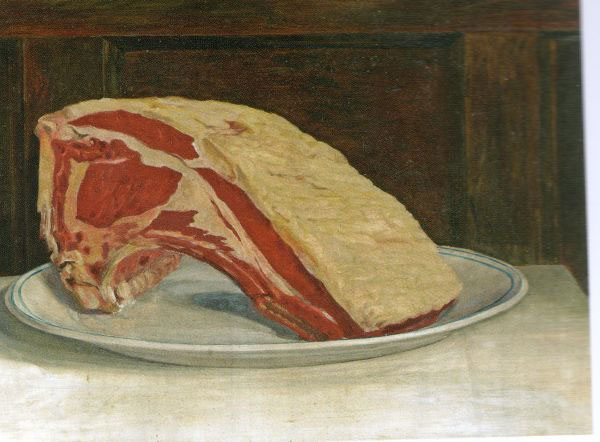Dr. Kitchiner’s recipe for ox cheek stew
Dr. Kitchiner’s recipe for ox cheek stew is a model of clarity appealing enough to print verbatim. Few authors today can match him for style and concision.
“Ox-Cheek stewed.--(No. 507.)
Prepare this the day before it is to be eaten; clean it, and put it into soft water just warm; let it lie three or four hours, then put it into cold water, and let it soak all night; next day wipe it clean, put it into a stew-pan, and just cover it with water; skim it well when it is coming to a boil, then put two whole onions, stick two or three cloves into each, three turnips quartered, a couple of carrots sliced, two bay-leaves, and twenty-four corns of allspice, a head of celery, and a bundle of sweet herbs, pepper, and salt; to these, those who are for a “haut goût” may add Cayenne and garlic, in such proportions as the palate that requires them may desire.
Let it stew gently till perfectly tender, i. e. about three hours; then take out the cheek, divide it into handsome pieces, fit to help at table; skim, and strain the gravy; melt an ounce and a half of butter in a stew-pan; stir into it as much flour as it will take up; mix with it by degrees a pint and a half of the gravy; add to it a table-spoonful of basil, tarragon, or elder vinegar, or the like quantity of mushroom or walnut catchup, or cavice, or port wine, and give it a boil.”

Notes:
-The turnips specified are the little white and purple ones; in British usage the big orange bombs, or rutabagas, are ‘Swede.’
-“Haut gout” translates as ‘high taste,’ a term much favored by the ‘doctor’ (he was, in fact, not), many of whose recipes deliver on that promise with or without their optional additions. Do add the cayenne and garlic, to taste, for this one.
-Dr. Kitchiner’s pints were imperial and consisted of twenty ounces.
-You would need to infuse your own vinegar; or, substitute malt.
-A formula for mushroom ketchup appears at our recipes. It was a staple of the long eighteenth century in the British Isles and north America that deserves revival.
-Walnut ketchup was made, with some difficulty, using green walnuts; they are not green for long. It also has fallen from favor.
-‘Cavice’ refers to soy sauce.

